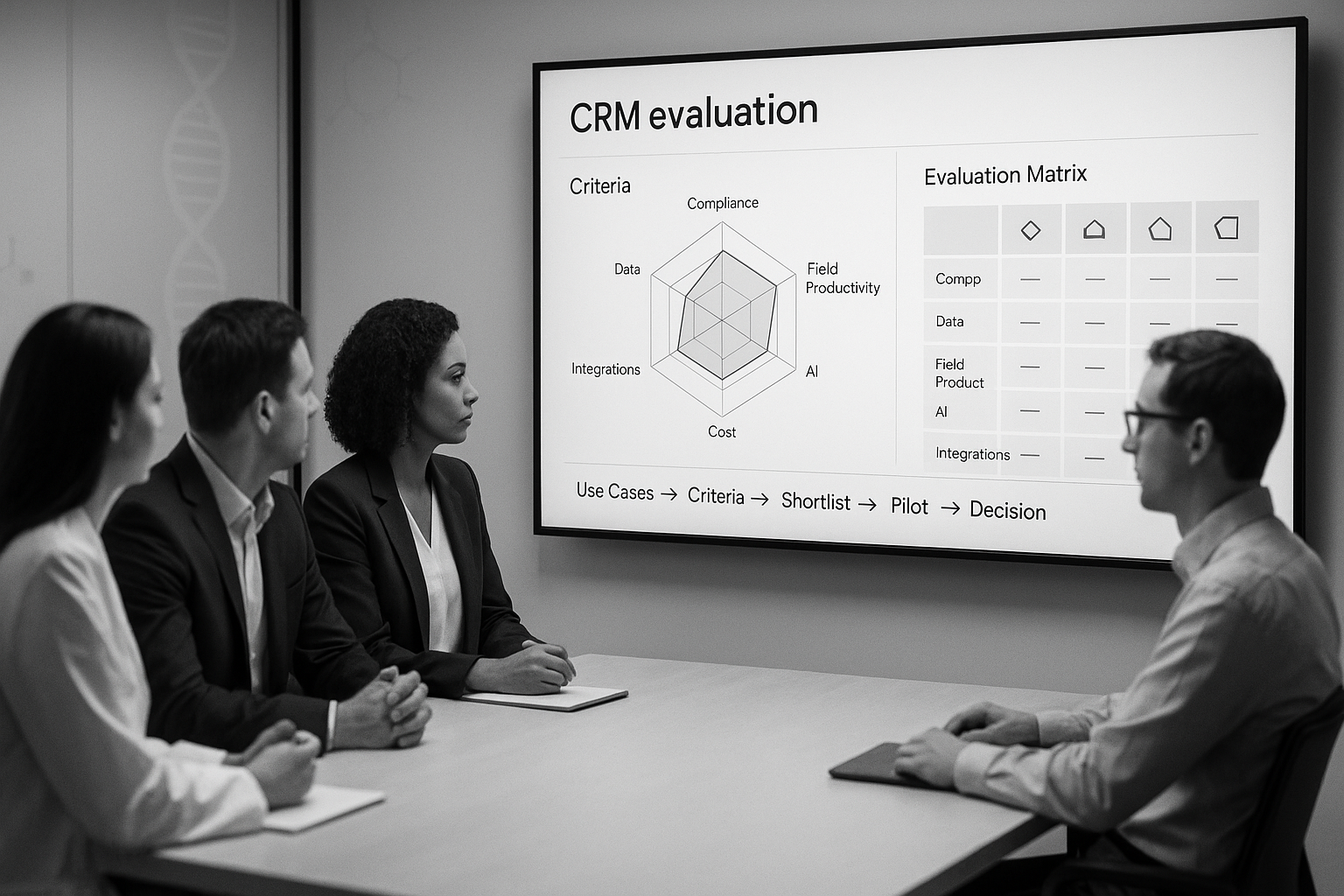Key Takeaways
- MDM is a Business Strategy: Master Data Management (MDM) is no longer just an IT project; it's a business-critical strategy for creating a single source of truth for patient, provider, and product data.
- Governance is the Foundation: A successful MDM strategy is built on a strong data governance framework that defines data ownership, quality standards, and access rules.
- Implementation is Phased: Roll out your MDM in stages, starting with a pilot project (e.g., provider data) to demonstrate value and refine processes before scaling across the enterprise.
- Focus on Key Domains: Prioritize master data domains like Patient, Provider, Product, and Payer data, as these have the most significant impact on clinical outcomes, operational efficiency, and compliance.
Healthcare organizations are under growing pressure to deliver faster, safer, and more efficient care. Yet fragmented, inconsistent data remains one of the biggest obstacles, undermining clinical outcomes, compliance, and financial performance.
Master Data Management (MDM) is the solution. A well-structured healthcare master data management strategy gives organizations a unified, accurate, and real-time view of essential data across all systems and departments.
This guide offers a step-by-step plan for building an effective MDM strategy tailored to the healthcare environment.
Why MDM Is the Backbone of Modern Healthcare
Healthcare generates an estimated 30% of the world's total data, but more data doesn't mean better data. Most organizations suffer from data fragmentation, poor quality, and manual processes that waste time and create risk.
A well-designed master data management in healthcare solves these problems at the root by creating a single source of truth—a centralized system that standardizes, cleanses, and governs your most critical data.
What Exactly Is Master Data in Healthcare?
Master data refers to the core business entities used repeatedly throughout your operations. In healthcare, this includes:
- Patient Data: Includes demographics, allergies, and insurance history. Strong patient MDM improves identity matching, reduces medical errors, and supports personalized care.
- Provider Data: Includes credentials, specialties, and schedules. Accurate provider MDM ensures correct assignments, maintains compliance, and drives operational efficiency.
- Product Data: Includes drug catalogs, device specifications, and formulations. Clean product data enables supply chain efficiency and accurate prescribing.
- Facility Data: Includes locations, ownership, and operational hours. This helps with resource planning and geographic insights.
- Payer Data: Includes claims, insurance coverage, and payment terms. This improves billing accuracy and reduces denials.
- Reference Data: Includes standard codes like ICD-10, SNOMED, and CPT. This standardizes documentation, billing, and reporting across the enterprise.
Key Challenges That Make MDM Essential
Before you build, it’s important to understand what you’re up against.
- Data Silos: Different departments often use disconnected systems. This leads to duplicate records, conflicting information, and incomplete patient or provider profiles.
- Poor Data Quality: Inconsistent data entry, missing fields, outdated records, and mislinked entities lead to medical errors, compliance violations, and unnecessary costs.
- Legacy Systems: Many health IT stacks were built decades ago. Interoperability is weak or nonexistent, making system-wide data integration difficult.
- Security and Compliance Risk: Sensitive healthcare data is a prime target for breaches. Without strong controls and lineage tracking, HIPAA and GDPR violations become inevitable.
- Lack of Scalability: As unstructured data explodes (e.g., medical images, IoMT device outputs), traditional systems can’t keep up. Performance drops, costs rise, and innovation stalls.
The 6 Pillars of a Strong Healthcare MDM Strategy
A solid MDM strategy isn’t just about tools, it’s about framework, governance, and execution. Here are the six core pillars:
- Data Governance: Set clear rules and ownership around data. Define who is responsible for data quality, access, and change management. This ensures consistency and regulatory alignment.
- Data Quality Management: Use automated tools to deduplicate, validate, and enrich records. Build validation rules at the point of entry and monitor quality over time.
- Integration and Interoperability: Your MDM must connect seamlessly with EHRs, billing systems, patient portals, lab software, and third-party data sources. APIs, ETL pipelines, and HL7/FHIR standards are key.
- Master Data Repository: A centralized, accessible store of cleansed, standardized records your organization’s single source of truth.
- Data Stewardship: Assign trained stewards to monitor data health, resolve conflicts, and ensure adherence to governance policies across domains.
- Security and Privacy: Implement encryption, audit trails, role-based access, and anonymization to maintain trust and meet HIPAA/GDPR obligations.
A Step-by-Step Guide to Implementing Healthcare MDM
Phase 1: Planning & Analysis
This foundational phase sets the tone for everything that follows.
- Assess the current data landscape and identify gaps:
Before implementing an MDM system, conduct a detailed review of your existing infrastructure. Identify where data resides, how it’s used, and where issues occur such as duplicate patient records, outdated provider credentials, or department-level workarounds. This assessment reveals gaps, inconsistencies, and areas for improvement. - Define clear, measurable goals:
Set SMART (Specific, Measurable, Achievable, Relevant, Time-bound) objectives for your MDM strategy. For example:
-
- Reduce duplicate patient records by 40% in 12 months
- Cut insurance claim rejection rates by 25%
- Speed up regulatory reporting cycles by 50%
- Assemble a cross-functional team and secure buy-in:
MDM is not just an IT initiative, it impacts every department. Build a team that includes stakeholders from clinical operations, compliance, IT, finance, research, and admin. Early buy-in and transparent communication across all levels will make implementation smoother and increase adoption later. - Develop an implementation roadmap:
Create a clear project plan with defined phases, timelines, key milestones, and ownership. This roadmap helps everyone stay aligned, sets expectations, and allows you to track progress systematically.
Phase 2: Design & Development
This is where strategic planning turns into technical execution.
- Design data models and define business rules:
Use insights from the planning phase to define how your master data will be structured. For instance, what does a “complete” provider profile look like? What constitutes a valid patient record? Establish clear business rules for data formatting, validation, and relationships between entities. - Choose the right MDM platform:
Not all MDM tools are created equal. Select one built for healthcare and life sciences that offers:
-
- Clinical-grade precision
- Support for regulatory standards (HIPAA, GDPR)
- Pre-built connectors for EHRs, billing, and lab systems
- Scalability to handle growing volumes of unstructured data
- An intuitive user interface for easier adoption
Phase 3: Data Migration & Integration
This is one of the most technically complex but critical phases.
- Map infrastructure and prepare for migration:
Work closely with IT leadership to understand how the new MDM solution will interact with your existing systems. Identify any outdated platforms that may need to be retired or restructured. Clean and map your legacy data carefully to ensure nothing valuable is lost in migration. - Migrate critical data systematically:
Transfer data from source systems to the MDM platform in stages. Before importing, cleanse and standardize it to avoid polluting the new environment. Prioritize high-value domains first (like patient or provider data). - Integrate with existing tools:
Use APIs or middleware to connect the MDM solution to systems such as:
-
- Electronic Health Records (EHRs)
- Revenue Cycle Management (RCM)
- CRM and ERP platforms
- Business Intelligence dashboards
Phase 4: Testing & Deployment
Before you go live, make sure everything works and then roll it out methodically.
- Conduct rigorous testing:
Validate data accuracy, integrity, and the enforcement of business rules. Use real-world test scenarios and data samples from different departments to simulate how the system will perform under actual load. Address bugs or inconsistencies early to avoid downstream issues. - Plan a phased rollout:
Instead of launching the full MDM across all domains at once, start with a single pilot—say, provider data. This gives your team a chance to refine processes, demonstrate value, and build confidence before scaling.
Phase 5: Training, Monitoring & Continuous Improvement
The final phase ensures your MDM system remains effective and relevant long after launch.
- Train staff and build data literacy:
A technically sound MDM system won’t succeed without people who know how to use it. Train users across departments on how to access, input, and maintain master data. More importantly, help them understand why it matters. - Monitor performance and data quality continuously:
Establish real-time dashboards or scheduled audits to track:
-
- Duplicate rates
- Record completeness
- Integration errors
- Governance compliance
Use these metrics to refine policies and catch issues before they escalate.
- Conduct post-implementation reviews:
After initial go-live, review your original goals. Did you hit your KPIs? What feedback are users giving? Where are the bottlenecks? These learnings can help you adjust and optimize future rollouts across other data domains.
How Technology is Transforming MDM
Modern master data management in healthcare is no longer just about centralization; it's about intelligence and automation.
- AI & Machine Learning: Automates data cleansing, deduplication, and anomaly detection, which increases accuracy and reduces manual work.
- IoMT Devices: Collect real-time patient vitals from wearables and other devices, syncing them with master records to enable proactive care.
- Cloud Platforms: Host scalable MDM systems that reduce infrastructure costs, improve availability, and accelerate collaboration across departments.
Frequently Asked Questions (FAQs)
-
What does MDM mean in healthcare?
In healthcare, MDM stands for Master Data Management, a strategy for centralizing and standardizing critical data like patient records, provider credentials, and medical codes across systems. -
How does MDM improve patient safety?
It ensures healthcare providers have accurate and complete patient information at the point of care, reducing the risk of misdiagnosis, medication errors, or delayed treatment. -
What’s the difference between EHR and MDM?
An EHR (Electronic Health Record) stores patient encounters within a specific system. MDM connects data across many systems, ensuring consistent records across the enterprise. -
How long does it take to implement MDM?
A pilot implementation can take 3 to 6 months. Full enterprise rollouts may span 12 to 24 months depending on complexity, legacy infrastructure, and data readiness.
Final Thoughts: MDM Is a Strategic Investment Not an IT Project
In a world where data drives everything from patient outcomes to reimbursement, building a resilient healthcare master data management strategy is essential. It's the difference between reactive data patchwork and proactive, intelligent operations—and between fragmented care and connected, personalized patient experiences.




